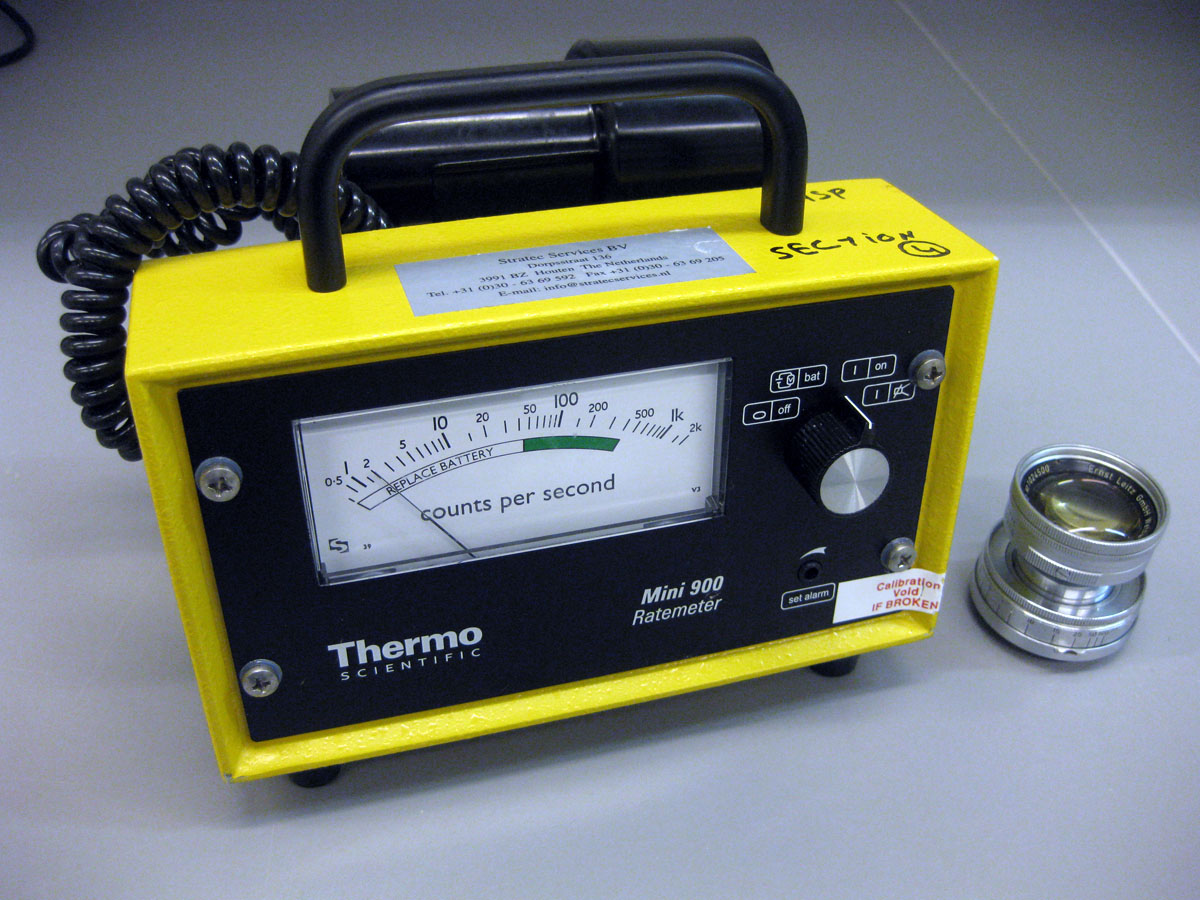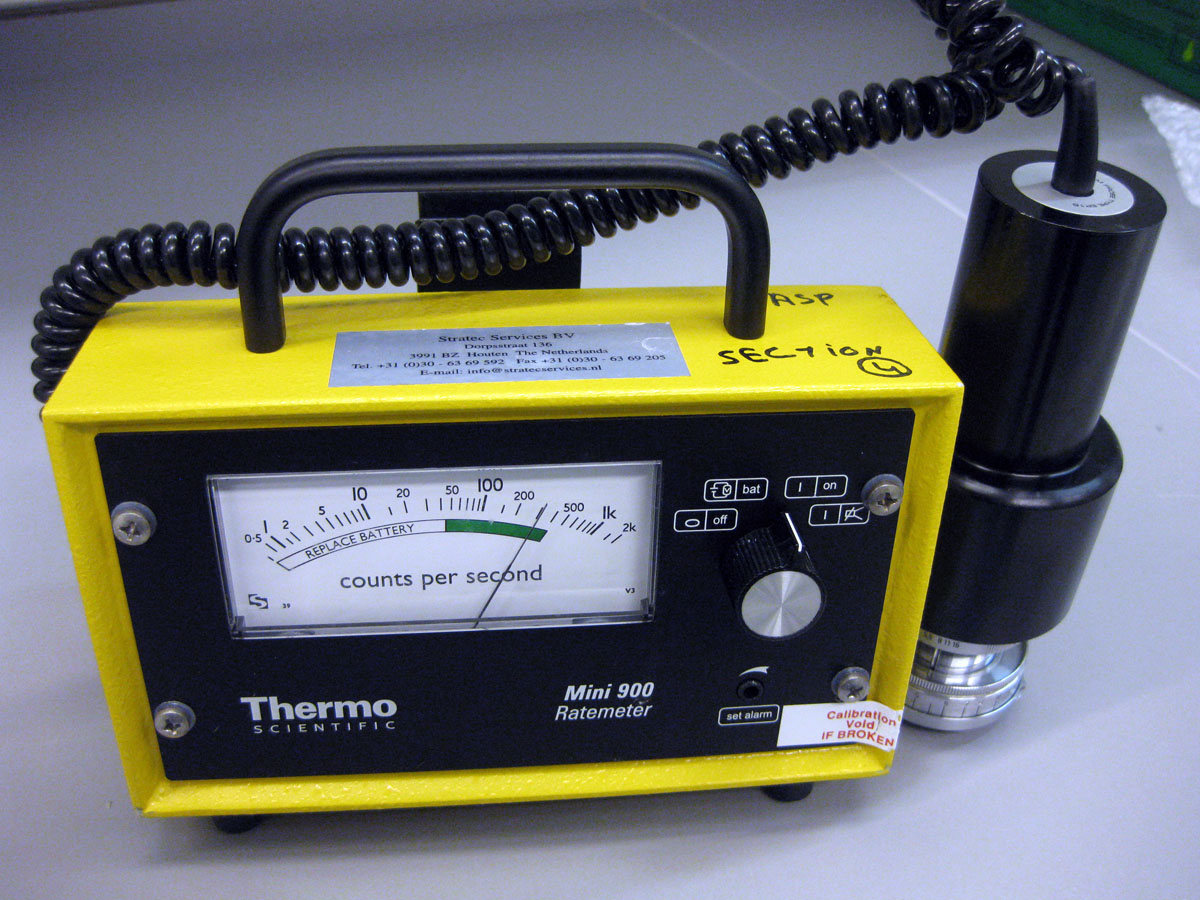rxmd
May contain traces of nut
On top of that half lives of alfa emitters are very long.
There are some alpha emitters with a long half-life, but alpha decay doesn't mean long half-life all by itself. There are other alpha emitters with pretty short half-lives, such as Polonium-218 with a few minutes.
Of course those with the longer half-life are around longer. But that doesn't mean they're more dangerous, rather the opposite. The longer the half-life, the safer it is. If the half-life is longer, it radiates less. A material with a half-life of a few million years is much less hazardous than one with a half-life of five minutes. Thorium in optical glass, for example, is pretty harmless.
SUMMICRON
This lens was based on a Gauss design modified by Lee of Taylor and Hobson and known as the Cooke Opic lens. It was similar to Zeiss Ikon's Biotar and Sonnar lenses. It is a little known fact that when Summicron lenses were first
introduced they contained radioactive glass. You can identify some radioactive Summicrons by the fact the lens will have a red star engraved on its aperture ring.
Where did you get this quote from ?
Stephen
kkdanamatt
Well-known
origin of rumor
origin of rumor
That information was forwarded to me from someone who knows someone, etc. who attends R.I.T.
origin of rumor
That information was forwarded to me from someone who knows someone, etc. who attends R.I.T.
That information was forwarded to me from someone who knows someone, etc. who attends R.I.T.
OK, where did they get it?
Stephen
edwliang
Established
Thorium glass was used as it was a high index of refraction with low dispersion. It is a type of glass in and of itself, not an impurity of Lanthanum glass.
It will light up a Geiger Counter. The Thorium Summicron is unusual as the first element uses Thorium. Most other "hot glass" lenses use Thoriated glass in the interior. I keep a filter over my two. It is an Alpha Emitter.
I have a summicron 50 LTM with s/n: 109XXXX. The front element doesnt show yellowish, but it lights up a emission counter, the figure is: 1.88 usv/h.
is it normal for Lanthanum glass to have emission? or i may have a thorium glass version of summicron?
thanks a lot.
HuubL
hunter-gatherer
Rob-F
Likes Leicas
Huubl, what is the serial number of this Summicron?
ckuwajima
Celso
Nice! What about the Geiger count at the rear of the lens?
David Hughes
David Hughes
Hmmm, but a lot of users of those lenses seem to have lived to a ripe old age...
Regards, David
Regards, David
HuubL
hunter-gatherer
Huubl, what is the serial number of this Summicron?
The number of the lens is 1024500 - made around 1952.
The front element was pretty yellow, so yellow that it didn't need a yellow filter for increasing contrast
Only the front element radiates. The monitor doesn't count above background level when aimed at the rear.
raid
Dad Photographer
So we are mainly talking about the collapsible Summicron. Right?
HuubL
hunter-gatherer
Yes, well that was the subject that the OP launched-- ages ago. I'd be interested in other radioactive lenses though.
ferider
Mentor
Yes, well that was the subject that the OP launched-- ages ago. I'd be interested in other radioactive lenses though.
My only other LTM yellow lens is the Nikkor 35/1.8.
There are plenty of SLR fast radioactive 50s though. I have one left:

Roland.
ChrisLivsey
Mentor
Interesting to resurrect this thread as the OPs second point on the star marking was never explored.
This link, Google Translate:
http://translate.google.com/transla...tar_star_radioactive_glass/00_pag.htm&act=url
Details where the star was used for prototypes but goes on to show radioactive glass in several elements of a lens design with a rear flint glass plate to "protect" the film. Not that star being used to identify the radioactive lens.
There is also a discussion and picture of a Canadian 35mm Summilux with star engraving but on the focus ring and a very unusual type of star which does seem to be factory:
https://www.l-camera-forum.com/topic/218369-goggled-35-summilux-red-star/
This link, Google Translate:
http://translate.google.com/transla...tar_star_radioactive_glass/00_pag.htm&act=url
Details where the star was used for prototypes but goes on to show radioactive glass in several elements of a lens design with a rear flint glass plate to "protect" the film. Not that star being used to identify the radioactive lens.
There is also a discussion and picture of a Canadian 35mm Summilux with star engraving but on the focus ring and a very unusual type of star which does seem to be factory:
https://www.l-camera-forum.com/topic/218369-goggled-35-summilux-red-star/
edwliang
Established
according to what i have read on the internet, they use Thorium glass as front element only during the 1st year of summicron 50's production, that is 1952 (nr before 105 xxxx).
In 1953, they use Lak9 glass and not radioactive. My copy is 109 xxxx (1953), and it should be no emission. However, I tested it with a meter and there is a reading of 1.88~2.00 usv/h compared to normal background of 0.19 usv/h. This come out both from the front and back of the lens.
Anyone has tested summicron rigid, summaron 35 2.8 or other Leica Lanthanmum glass lenses?
regards
In 1953, they use Lak9 glass and not radioactive. My copy is 109 xxxx (1953), and it should be no emission. However, I tested it with a meter and there is a reading of 1.88~2.00 usv/h compared to normal background of 0.19 usv/h. This come out both from the front and back of the lens.
Anyone has tested summicron rigid, summaron 35 2.8 or other Leica Lanthanmum glass lenses?
regards
edwliang
Established
sorry, i was wrong. English Chance Brothers' Thorium Based Glass was only used in Summitar*.
Summicron 50 has adopted Lak9 (thorium free)since its first batch production (from 993 xxx 1952). However, the first batch of Lak9 glass made in Wetzlar was 'experimental' and may contain small amount of thorium oxide.
here is the website which explains in very detail: http://www.marcocavina.com/articoli_fotografici/50mm_Leica_a_telemetro/00_pag.htm
Summicron 50 has adopted Lak9 (thorium free)since its first batch production (from 993 xxx 1952). However, the first batch of Lak9 glass made in Wetzlar was 'experimental' and may contain small amount of thorium oxide.
here is the website which explains in very detail: http://www.marcocavina.com/articoli_fotografici/50mm_Leica_a_telemetro/00_pag.htm
HuubL
hunter-gatherer
Well, my 1952 Summicron is really hot! I'll check my Summitars later.

I decided to test my other 1952 Summicron with the GM-counter at work. The photos from top left to bottom right show:
1. the Leica IIIf RD-ST + Summicron
2. a close-up through the lens showing its yellow color
3. the background radiation: 1-2 cps
4. the radiation from the cron about 5 cm from the front lens: 40 cps
5. the radiation from the cron directly above the lens: 300 cps
6. the urban myth that a sheet of paper stops the radiation
7. even with the cap on radiation is detectable at 5 cm away: 30 cps
8. and immediately above the cap: 40 cps
9. and even through the rear, lens radiation still measures 10 cps.
I left my film in for 6 months. Will develop it later and show the results.

I decided to test my other 1952 Summicron with the GM-counter at work. The photos from top left to bottom right show:
1. the Leica IIIf RD-ST + Summicron
2. a close-up through the lens showing its yellow color
3. the background radiation: 1-2 cps
4. the radiation from the cron about 5 cm from the front lens: 40 cps
5. the radiation from the cron directly above the lens: 300 cps
6. the urban myth that a sheet of paper stops the radiation
7. even with the cap on radiation is detectable at 5 cm away: 30 cps
8. and immediately above the cap: 40 cps
9. and even through the rear, lens radiation still measures 10 cps.
I left my film in for 6 months. Will develop it later and show the results.
leicapixie
Well-known
Many lenses in same period are radioactive.
I have a "newer" Collapsible Summicron that is safe..
I have a Pentax Takumar 50mm f1.4, 85mm f1.9 that yellowed.
A Canon 50mm f1.2 was highly radioactive!
I placed in darkroom, the lens on a piece of photographic paper.
After a week, I lifted lens and looked with safelight.
There was a dark mark size of lens element!
No need to develop!
Next step was sell and warn!
I have a "newer" Collapsible Summicron that is safe..
I have a Pentax Takumar 50mm f1.4, 85mm f1.9 that yellowed.
A Canon 50mm f1.2 was highly radioactive!
I placed in darkroom, the lens on a piece of photographic paper.
After a week, I lifted lens and looked with safelight.
There was a dark mark size of lens element!
No need to develop!
Next step was sell and warn!
Bar8barian
Established
xxxxxxxxxxxxxxxxxxxxxxxxxxxxxxxxxxxxxxxxxxxxxxxxxxxxxxxxxxxxxxxxxxxxxxxxxxxxxxxxxxxxxxxxxxxxxxxxxxxxxxxxxxx
mpaniagua
Newby photographer
My collapsible Summicron serial # is 1042919 and it does has some yellow tint (don't really mind, cause I use it on b/w only).
Thing is, when I use a collapsible lens on the IIIf of IIf (being Elmar, Summitar, Summicron or Summar), I normally carry it on my pants front pocket.
Should I be concerned about the radiation level from the lens? Any case for concern?
Best regards
Marcelo.
Thing is, when I use a collapsible lens on the IIIf of IIf (being Elmar, Summitar, Summicron or Summar), I normally carry it on my pants front pocket.
Should I be concerned about the radiation level from the lens? Any case for concern?
Best regards
Marcelo.
Share:
-
This site uses cookies to help personalise content, tailor your experience and to keep you logged in if you register.
By continuing to use this site, you are consenting to our use of cookies.




